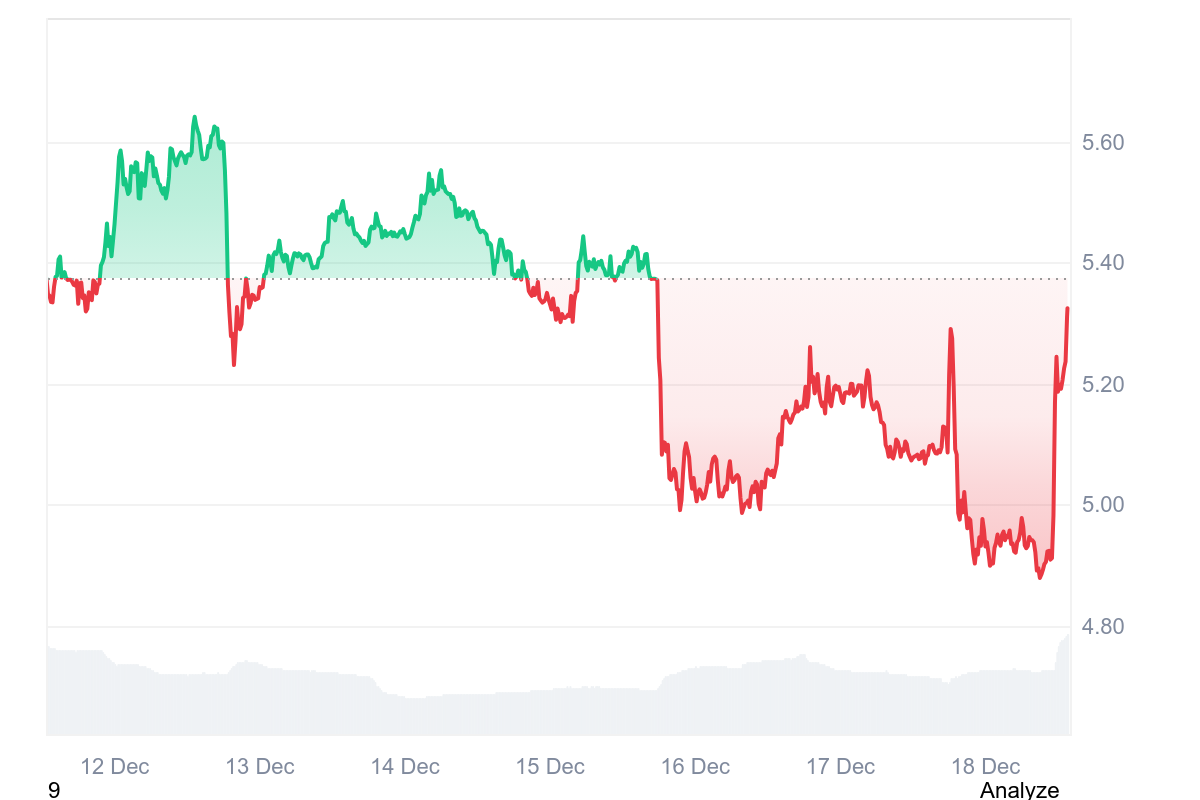Bitcoin News Update: Federal Reserve Shifts Course—Crypto Markets Brace for Critical Volatility Challenge
- The Fed's Oct 29 rate cut decision (25bps expected) drives crypto volatility, with markets pricing 96.7% cut probability and anticipating 2026 policy clues from Powell's remarks. - Bitcoin hovers near $113k-$115k, poised for $104k or $120k swings based on Fed stance, while $358M short liquidations highlight "buy the dip" potential post-announcement. - U.S.-China trade summit adds uncertainty; BTC briefly reclaimed $116k on improved relations but retreated as institutional demand waned, with $114k support
With the U.S. Federal Reserve’s interest rate decision set for October 29, the cryptocurrency market is bracing for increased turbulence as investors await the central bank’s next move. Most experts anticipate a 25 basis point rate reduction, which would lower the target range to 3.75%–4.00%, reflecting cooling inflation and a slowdown in economic activity. According to Coinpedia, markets have already factored in a 96.7% chance of this cut, and another reduction is likely in December. However, all eyes are on Chair Jerome Powell’s comments after the meeting, as his statements could influence expectations for 2026 monetary policy and spark significant moves in risk assets such as

Bitcoin (BTC) is currently trading between $113,000 and $115,000, with two main outcomes possible before the FOMC announcement. If the Fed adopts a hawkish tone or maintains current policy,
The upcoming U.S.-China trade summit on October 30 introduces further unpredictability. Recent diplomatic developments hint at progress toward a trade agreement, which could lift risk sentiment and benefit crypto assets. Bitcoin briefly surpassed $116,000 following positive news on U.S.-China relations, but waning institutional interest has since pulled BTC back to $112,000, as reported by Coindesk. Swissblock analysts warn that Bitcoin needs to maintain support at $114,000 to continue its upward momentum, with on-chain indicators such as spot ETF inflows and active wallet addresses remaining crucial, as referenced by
Although the anticipated rate cut is already reflected in prices, any unexpected moves—such as a larger 50-basis-point cut or a pause—could spark sharp declines or rallies. If the Fed holds rates steady, Bitcoin and Ethereum could experience steep drops, while safe-haven assets like gold may attract more interest, a risk noted in Coinpedia’s FOMC preview. Conversely, a dovish shift could help BTC regain its role as a hedge against inflation and low interest rates, a trend seen in previous periods of monetary easing, as discussed in
The overall market is still consolidating, with Bitcoin ETF inflows and broader economic factors such as tech sector earnings and quantitative tightening influencing the next direction. Glassnode analysts observe that current inflows are still below those seen in past bull runs, indicating subdued institutional participation, as outlined in a
Disclaimer: The content of this article solely reflects the author's opinion and does not represent the platform in any capacity. This article is not intended to serve as a reference for making investment decisions.
You may also like
Crypto Market Enters Deeper ‘Fear’ Sentiment as Top Assets Show Huge Dips
Fuse Energy Raises $70M Series B on Solana, Valuation Reaches $5 Billion
Uniswap price gains amid potential 100M UNI burn

Alert Rumor: EA Sports Could Explore XRP for In-Game Payments